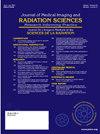设计一个人工智能驱动的聊天机器人来满足放射技师的需求:一种混合方法
IF 2
Q3 RADIOLOGY, NUCLEAR MEDICINE & MEDICAL IMAGING
Journal of Medical Imaging and Radiation Sciences
Pub Date : 2025-07-01
DOI:10.1016/j.jmir.2025.102054
引用次数: 0
摘要
AimGenerative AI通过简化工作流程和促进知情决策,正在彻底改变行业。然而,现有的人工智能驱动的聊天机器人通常针对普通受众,提供广泛的功能,不能满足特定职业的特定需求。在医疗保健领域,人工智能在自动化任务和改进知识检索方面表现出了巨大的潜力,但其在放射照相方面的应用仍未得到充分探索。放射技师面临着独特的挑战,包括访问更新的成像协议,导航不同的工作流程,以及在时间限制下快速做出决策。本研究旨在通过评估放射技师面临的挑战和探索他们对人工智能驱动的聊天机器人的期望来弥合这些差距,从而为定制解决方案的开发提供信息,从而提高效率和决策。方法采用解释序列设计,首先对39名放射技师进行调查,以确定主要挑战和期望。定量数据采用描述统计和推理统计进行分析。随后,我们对有目的地抽样的参与者(n=9)进行焦点小组讨论(fgd),并逐字记录,并进行专题分析,以更深入地了解放射技师的经验、看法和期望。调查结果显示,87.2%的放射技师在访问更新的成像协议方面遇到困难,而59%的放射技师在不同环境下的工作流程导航方面遇到困难。参与者强烈优先考虑快速访问成像协议(87.2%)和定制工作流程指导(84.6%)。对聊天机器人准确性(87.2%)和易用性(43.6%)的担忧也很突出。专题分析显示,资源分散和轮岗是这些挑战背后的关键因素。与会者表示,需要人工智能驱动的聊天机器人提供快速可靠的决策支持,优先考虑快速访问成像协议和工作流程指导等功能。聊天机器人被视为一种很有前途的解决方案,可以使实践标准化,减少对同事的依赖,提高效率。影响采用的关键因素包括信任聊天机器人的准确性、基于证据的建议、简洁的回应和移动可访问性,从而实现跨不同临床环境的无缝集成。本研究确定了放射技师的操作挑战,并就他们对人工智能驱动的聊天机器人的期望提供了可操作的见解。量身定制的解决方案可以集中更新的协议,增强决策,并支持工作流程导航,可以提高效率并减轻放射技师的压力。未来的工作将集中在将这些发现整合到聊天机器人设计中,并评估其对临床工作流程和患者护理结果的影响。本文章由计算机程序翻译,如有差异,请以英文原文为准。
Designing an AI-Driven Chatbot to Address Radiographers’ Needs: A Mixed-Methods Approach
Aim
Generative AI is revolutionizing industries by streamlining workflows and facilitating informed decision-making. However, existing AI-driven chatbots often target general audiences, offering broad functionalities that do not address the specific needs of niche professions. In healthcare, AI has demonstrated promise in automating tasks and improving knowledge retrieval, yet its application in radiography remains underexplored. Radiographers face unique challenges, including accessing updated imaging protocols, navigating diverse workflows, and making rapid decisions under time constraints. This study aims to bridge these gaps by assessing radiographers’ challenges and exploring their expectations of AI-driven chatbots to inform the development of a tailored solution that enhances efficiency and decision-making.
Methods
An explanatory sequential design was employed, beginning with a survey of radiographers (n=39) to identify key challenges and expectations. Quantitative data were analysed using descriptive and inferential statistics. Subsequently, focus group discussions (FGDs) were conducted with purposively sampled participants (n=9), and transcribed through verbatim, and thematic analysis was conducted to gain deeper insights into radiographers’ experiences, perceptions, and expectations.
Results
Survey findings revealed that 87.2% of radiographers struggled with accessing updated imaging protocols, while 59% faced difficulties navigating workflows across different environments. Participants strongly prioritized quick access to imaging protocols (87.2%) and tailored workflow guidance (84.6%). Concerns about chatbot accuracy (87.2%) and ease of use (43.6%) were also prominent.
Thematic analysis revealed that fragmented resources and rotational roles were key factors underlying these challenges. Participants expressed a need for AI-driven chatbots to provide quick and reliable decision support, prioritizing features like rapid access to imaging protocols and workflow guidance. Chatbots were seen as a promising solution to standardize practices, reduce reliance on colleagues, and enhance efficiency. Critical factors influencing adoption included trust in the chatbot’s accuracy, evidence-based recommendations, concise responses, and mobile accessibility, enabling seamless integration across diverse clinical settings.
Conclusion
This study identifies radiographers’ operational challenges and provides actionable insights into their expectations for an AI-driven chatbot. A tailored solution that centralizes updated protocols, enhances decision-making, and supports workflow navigation can improve efficiency and reduce stress among radiographers. Future work will focus on integrating these findings into chatbot design and evaluating its impact on clinical workflows and patient care outcomes.
求助全文
通过发布文献求助,成功后即可免费获取论文全文。
去求助
来源期刊

Journal of Medical Imaging and Radiation Sciences
RADIOLOGY, NUCLEAR MEDICINE & MEDICAL IMAGING-
CiteScore
2.30
自引率
11.10%
发文量
231
审稿时长
53 days
期刊介绍:
Journal of Medical Imaging and Radiation Sciences is the official peer-reviewed journal of the Canadian Association of Medical Radiation Technologists. This journal is published four times a year and is circulated to approximately 11,000 medical radiation technologists, libraries and radiology departments throughout Canada, the United States and overseas. The Journal publishes articles on recent research, new technology and techniques, professional practices, technologists viewpoints as well as relevant book reviews.
 求助内容:
求助内容: 应助结果提醒方式:
应助结果提醒方式:


